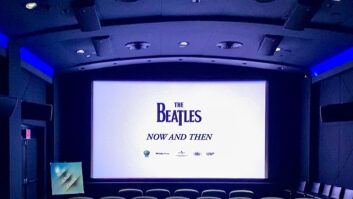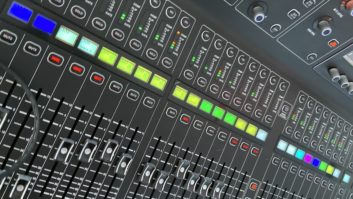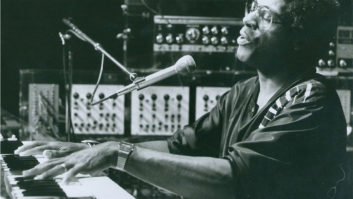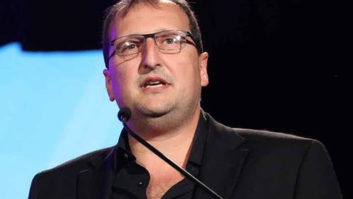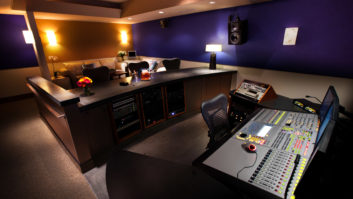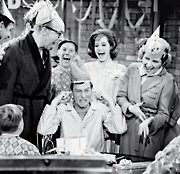
The Dick Van Dyke Show
Who would have ever thought that releasing classic TV shows on DVD would become all the rage? The hottest trend in consumer releases has become a boon to the studios, a re-run cash cow that has found major companies such as Columbia Tri-Star, Fox and A&E reissuing beloved vintage series including Starsky & Hutch, Lost In Space and Monty Python’s Flying Circus. New shows are also benefiting: The first season of the canceled Family Guy reportedly sold 1 million units, prompting Fox execs to ponder reviving the show this year.
Yet while fans and critics wait for their favorite series to be revived digitally, and while the releases themselves are prone to sharp criticisms regarding the varying quality, the reality of remixing and remastering TV shows for DVD release is far more complicated than it would seem. Many series take a year or more to assemble. Source materials, when found, can vary radically in quality, as can formats. Some shows have film masters, others just video clones.
In the end, the quest to bring back TV on DVD is a bit like a treasure hunt with a lot of fool’s gold to be found. But it can also reap big rewards.
TALES FROM THE CRYPT
Finding usable source elements has become the biggest challenge for studios in assembling full seasons of shows. While programs from the past 20 or 30 years have generally been well-cataloged and preserved, many have languished in the vaults. Older ones, in some cases, have been erased or discarded because of limited storage space and a lack of foresight. Of those that are found, some, thankfully, remain untouched; others are worse for wear. Some companies like Paramount have extensive libraries with many preserved film prints, while an indie like Anchor Bay has worked off of high-quality video masters obtained through various licensors.
To assemble Sledge Hammer!, a 1980s crime series, Anchor Bay scoured vaults in Hollywood and beyond for video masters. “Some needed more work than others and they came from different sources: different studios and different labs,” explains Bo Altherr, DVD production manager for Anchor Bay Entertainment. “Some people were holding this stuff in their vaults that was just sitting on a pallet. Then you have to follow the trail. Somebody knows somebody else. ‘Hey, that might be over at Warner Bros.’ Who knows why? Sometimes they don’t know how they got it. Over the last five years of doing this, thankfully, people haven’t transferred jobs too much, and I’ve gotten some pretty decent contacts in each studio, different labs around L.A., different contacts in the UK and up in Canada.”
Ron Smith of Paramount
“Basically, it’s [about] hunting down the best available source elements that you can actually use for telecine,” states Kai Thomasian, editor for Image Entertainment. For a show like Naked City, Image lucked out and found prints in a vault with usable optical tracks, while CBS’ materials for The Twilight Zone — with original camera negative and superb mag audio — were a snap to work with. For The Dick Van Dyke Show, “It was a really long, hard search to find the best source elements available,” Thomasian explains. “At one point, someone had handed us some 16mm elements and they were just too far gone. We kept looking and looking and hunting around every vault around town. We were able to get all the good picture elements, but, unfortunately, the optical tracks could only be used as guide scratch tracks — and even those were kind of out of sync anyway.”
While hunting for mag elements, the Image team found ¾-inch video dubs, then tracked down the 1-inch video masters and found the mag sound on those superior to the optical tracks. But a new problem arose: The film transfers included everything, even the commercials, but the 1-inch tapes were cut for syndication.
“Every now and then, you’d either have half of a missing scene or right in the middle of a scene, it’s different,” explains Thomasian. “My job was to go through — after we received the film transfer masters, which were just finished telecines — and literally match every show up to the audio tracks on the 1-inch. Not cutting out the picture, but dubbing the 1-inches onto Digi Beta and then just matching the 1-inch to the transfer masters so we got everything that was originally in the show. If dialog or music were missing, I’d grab it from the optical and try to tweak it so it would blend together. At some point, it was almost cut-to-cut, and the audio was off anyway [because] the sync was out on the 1-inches. I had to go back and re-sync the shows; I got as close as I possibly could. After that, it was [time to] stuff it into Pro Tools, because with the 1-inch, you’ve got a lot of hiss and pops and other things like that.”
Often, select episodes of shows had been used and abused to the point where they needed serious restoration. Such was the case with Star Trek‘s original pilot. “The first episode, which is known as ‘The Cage’ [and] was cut up to make ‘The Menagerie’ into a two-part episode, was in the worst shape because it had been handled so many times,” explains Ron Smith, head of DVD mastering for Paramount. He felt strongly about restoring the episode because a previous VHS release had distortion, and he discovered that one of the mags “was just falling off of the reel.”
“So that’s the show we started with,” he continues. “Some of the source materials unfortunately were damaged, so we didn’t have split tracks on the whole show. We had parts of the show that were in good shape and other parts where all we had was a composite track, so we really had to checkerboard it together basically using music from the show and parts of a soundtrack that had been released several years ago. That was the hardest one to do and, of course, the one we did first. If we had it to do over again, I probably would have gotten a dozen or so under my belt before I tried to tackle that one.”
LAUGH IN
One of the more quietly controversial elements of television is the laugh track. Sledge Hammer! creator Alan Spencer was so miffed by ABC executives’ insistence on inserting a laugh track within the first 10 or so episodes of his show that when the time came to create the DVD, he asked for its removal. Thus, Anchor Bay’s Altherr embarked on his own exhaustive audio quest for the comic cop show.
“Sometimes with season one, we had to do a lot of digging all over the place for workable elements,” says Altherr. “That was a humongous challenge: to dig up some elements that were actually workable so they would be at the same level of quality as later episodes in the season. We took in calls from fans from around the world off of his [Spencer’s] Website. A lot of people in the UK and some people in Canada sent us videotape. We looked at the logo to see if it was in syndication, what was the original airdate, because people were taping them back in the mid-’80s. So we were comparing what they were seeing and then trying to track down from the television studios, where it was currently airing, to see if we could get clones of those masters.”
Getting the video masters was one thing, but getting rights to use them was another. “You run into trouble because the licensor [who has] the video rights for Sledge Hammer! doesn’t own the license for the syndicated TV airing in North America and/or abroad,” says Altherr. “So then you’ve got to call and ask for permission from other studios and other sources; some are cooperative, some aren’t.”
He and his co-workers had to find mixes with separate M&E tracks that would allow them to remove the laugh track. “[For] some of the episodes that had the laugh track on it, we were combining three different elements for the exact same episode to get one clean, finished DVD master,” Altherr reveals. “We went scene-by-scene sometimes, depending if one sounded better than the other. It was just a big jigsaw puzzle, trying to put that together episode by episode.”
Sledge Hammer!
Altherr admits that Sledge Hammer! was probably the toughest show Anchor Bay has done so far. “But the good news going into season two is that we already have good elements and there are no laugh track issues.”
For shows that keep their laugh track, the question of mixing can come into play, and that can also help rein in other audio elements. “We transferred the half-inches on Taxi, Mork & Mindy, Happy Days and Laverne & Shirley and made them all sound consistent,” says Smith. “We normalized the dialog levels. Some of the laugh tracks were obviously way too hot and we would equalize them. And they end up sounding a lot better. Even though this is not remixing or spatializing or doing all the wild things that we do to make 5.1 tracks, it’s just as important and just as gratifying to make a good mono track and make it sound as good as possible.”
SNAP, CRACKLE, POP!
With many mag tracks being decades old, noise and hiss are inevitable. Modern technology allows audio engineers and editors to clean up these problems. “We’re actually able to control some of the distortion and go scene-by-scene and correct levels,” remarks Altherr. “We can take out little ticks and pops. We go through every show, whether it’s 30 or 60 minutes, and put it through a sweetening processor to correct those things.”
Anchor Bay has a “sound doctor” at Crest National in Hollywood “who picks this stuff apart mercilessly,” says Altherr. “After he’s gone through it and I’ve got the QC report, we go over what we have to fix. He puts down severity codes on the levels as far as problems. We take care of all the major ones up front, and then we go back into an extra sweetening session, dependent on the level and how much time and money it’s going to take. That’s why we search so long and hard in the beginning to get the best elements possible.”
After cleaning up the audio tracks comes the decision of whether to give them 5.1 mixes. Thomasian says that Image has not created surround mixes for shows originally done in mono because they do not sound good. “It’s more of a purist stance,” he asserts, adding that television studios did not have stereo or 5.1 sound in the ’60s. “We try to preserve the original presentation as much as possible, and that’s been the credo around here. With the exception of the commercials, everything is like being there [in the original era].”
Some older shows can work well with a surround remix and a lot of nuances in old mixes can come to life in a new audio format. Smith acknowledges this in the case of the original Star Trek shows with their ambiences and atmospheres, “just by virtue of the fact that you’re separating things that had always been married or in 2-channel.” At the same time, Paramount included the original mono track for fans that expect to hear it.
Problems existed with some of the original Star Trek mag tracks. “After a dozen episodes or so, they just didn’t sound very good,” admits Smith. “Some of the voices sounded like you were hearing them through a transistor radio. We noticed that there were other sound elements that were on half-inch tapes. At first glance, it appeared that they were a shorter version, a syndicated version, but we pulled a number of them and it turned out that they were the network version from the original scoring stage sessions and sounded much better than the mags. The mags were basically what everyone has heard forever, so these half-inches had never been used from what I could tell. With half-inch tape that’s 35 years old, they start to shed when you play them, so some of them had to be baked to get a good play or two out of them and restored and transferred onto a piece of safety tape or some digital format. After that, when we realized we had something to pick from, we would listen to the mag and listen to the half-inch, and most of the time, we ended up using the half-inch. That was very gratifying. We were in a lot better shape than we thought we were.”
The newer Star Trek series were a different matter. Smith reports that The Next Generation was a fairly advanced show that went Dolby Surround part-way into the series. “There are stereo tracks for the first three-and-a-half seasons and then they’re all Dolby Surround,” he remarks. “There is already a center channel and dialog and left and right and a surround track, so all we really needed to do was make a stereo surround and make sure that there’s something coming out of the boom [and] put the low frequencies where they should be.”
Smith adds that Paramount was lucky to have digital multitrack mixes for all of the newer Star Trek series. “They mixed those digitally, although they ended up being analog laid back to 1-inch tape or D2, which is composite rather than component video,” he remarks. All of the recent Star Trek shows — Next Generation, Deep Space Nine and Voyager — were mixed in digital. “We took the digital masters that they had made, but no one had ever heard before, and make 5.1s from those. We really had the basic elements and that wasn’t really a stretch. That was sitting there crying out for someone to do.”
TELEVISION TREASURES
With the TV on DVD boom in full force, shows from every decade of television are surfacing on retail shelves. And for the dedicated crews who work on them, it is gratifying to see the public shelling out the bucks and showing devotion for their hard work. Money aside, for many of those involved, this is a true labor of love.
“I think if anything, a lot of the guys who are doing it and remember watching these shows when they were growing up feel like it’s a responsibility to make sure that you do the best to the material because you tend to have really good memories — if you enjoyed the show,” remarks Thomasian. “You feel like there is a responsibility to make it the best it can be with the given time and money that you’re allotted. It’s a whole lot of fun and a real challenge.”
And for pop culture nostalgists and collectors, it’s a real treat.
